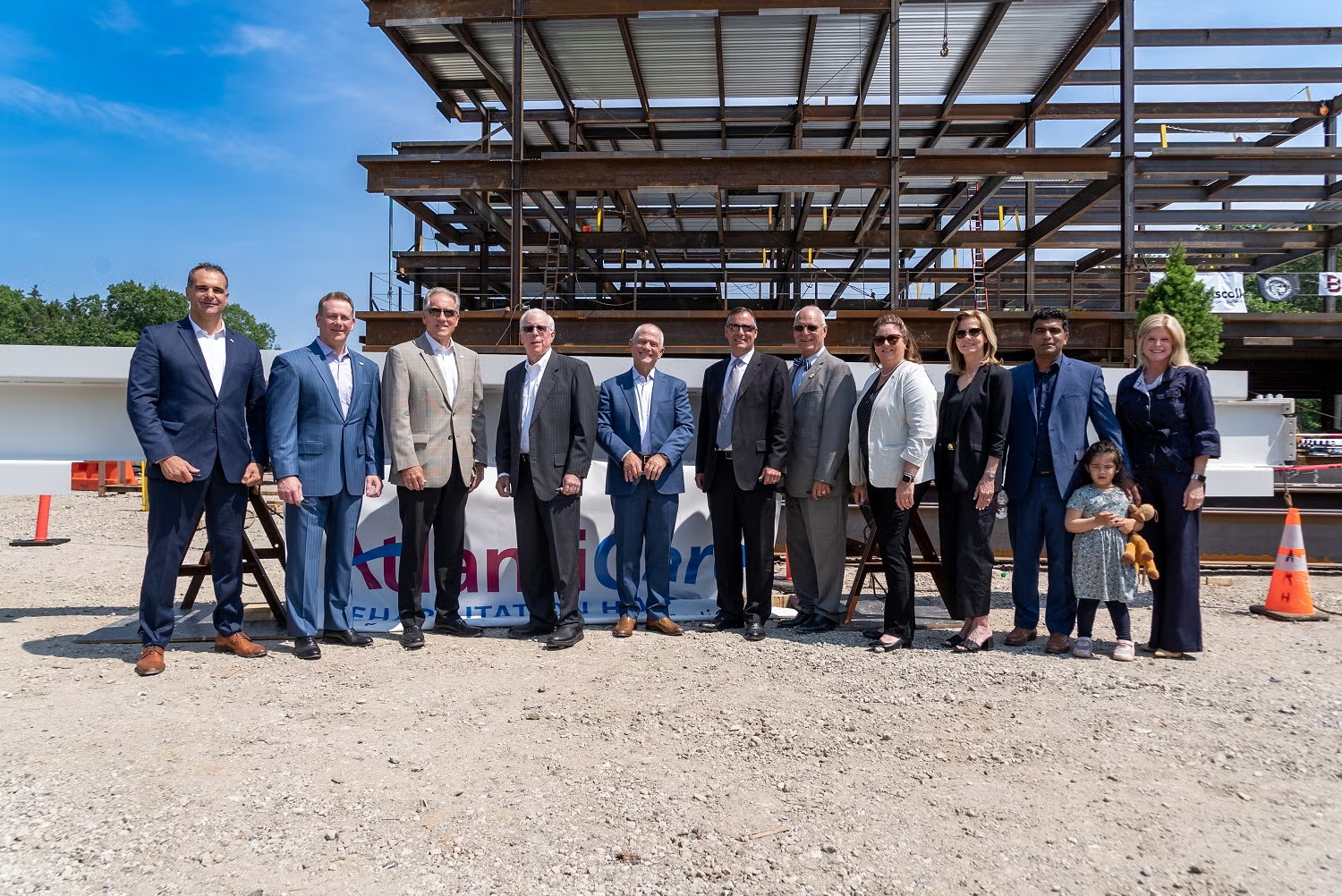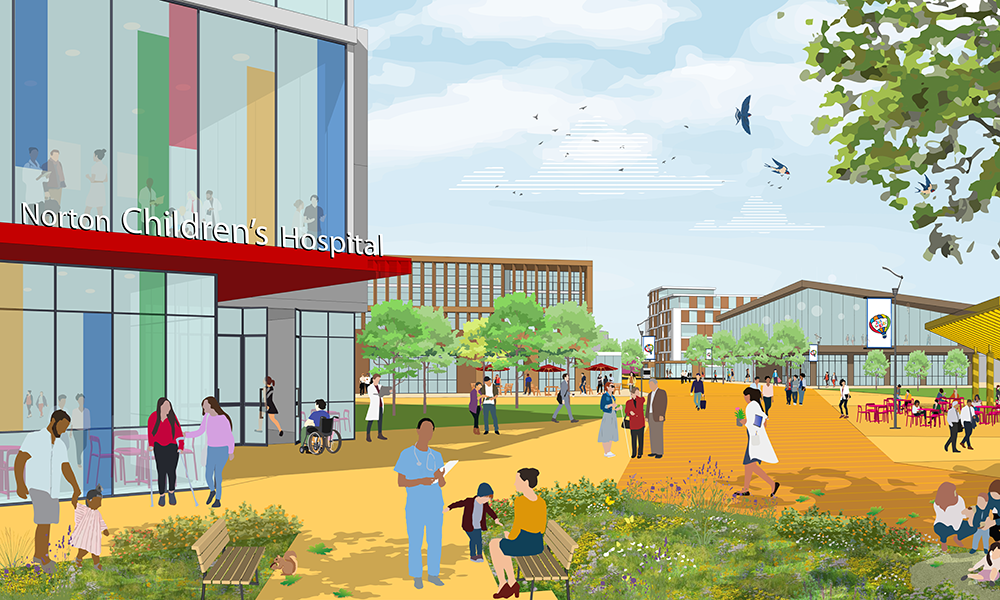By Brendon Buckley
The pandemic changed every industry, but its impact on healthcare may be the most profound. Beyond the obvious strain on staff, resources and systems, COVID-19 introduced new expectations for healthcare facilities’ technology infrastructure, design and functionality. As we navigate this time of unprecedented change, healthcare facilities are setting their sights on curating flexible, adaptable spaces that can handle the ever-evolving healthcare landscape.
With that in mind, here are five healthcare trends to watch:
- Data will be the solution to rising competition
Healthcare has become increasingly competitive, and facilities are making investments in data collection and analysis that can improve outcomes to rise above the fray. The healthcare building and environment has a direct impact on the ability to treat patients. Bringing together building, business and clinical data along with analytic capabilities on what is/has happened enables lower operating costs, lower readmission rates, higher Medicare and Medicaid reimbursement (leading to better patient experience), and the ability to predict and optimize the building so that the healthcare environment is part of the treatment. These outcomes lead to increased profits and improved operations across the board, freeing up resources that allow healthcare organizations to reinvest in their facilities, fueling consistent innovation within the sector.
- Patient satisfaction will increase as analytics programs become more intelligent.
Care environments can have a direct impact on patient experiences. While many facilities already gather data, healthcare facilities that want to gain a competitive edge need to employ technology that integrates and analyzes that data effectively. Smart, autonomous buildings can apply edge-device level intelligence to create real-time, secure, actionable insights that help facilities and staff respond to occupant needs and improve patient experiences at every level.
Imagine a patient room that uses sleep data to control temperature, adjust lighting and noise management for a more restful stay. Or a hospital that can quickly adapt spaces to accommodate an influx of highly infectious patients by digitally adjusting room elements like air pressure, temperature and access controls-including pathogen detection and air cleaning. With connected patient and facility data, these environments are within reach.
- Smart building investments will alleviate workforce challenges.
Staffing has long been a challenge for healthcare facilities and has dictated hospital workflows. Unfortunately, the national labor shortage and COVID-19 burnout have made staffing healthcare facilities even more difficult. Intelligent upgrades allow facilities to lean on technology to alleviate the burden of perpetual understaffing, reduce the strain of room management and make administrative tasks easier to complete.
For example, “telerounding” uses touchless technology and intelligent building design to allow doctors to complete rounds via video. Additionally, family members can be included in the telerounding video sessions, ultimately improving alignment and timely decisions on care. It saves time and shortens stays by allowing providers to visit patients without interrupting other work. This solution and others like it will form the backbone of hospital operations, enabling top-notch patient experiences, improved outcomes and lightened workloads even when a facility is understaffed.
- Environmental, social and governance (ESG) will become a priority
Care organizations have a unique interest in improving sustainability policies because of their high use of energy and the health and safety implications of unsustainable practices.
With the above in mind, addressing wasteful, inefficient infrastructure and processes will become increasingly important to healthcare organizations that want to compete in the market.
Many facilities are already developing and executing plans for ESG, particularly sustainability – from goal setting and alignment to sustainable operations with recognized impact to patient care, reduced operating costs and a commitment to their communities.
- Healthcare organizations will explore new, less risky funding options.
All of these digitally driven facility upgrades may sound utopic to healthcare institutions whose resources have been stretched thin by the pandemic, but creative funding solutions can help bring these improvements within reach. More healthcare organizations will begin to lean on trusted partners to manage the financing, risk, compliance and success of infrastructure technology implementations.
Equipment loans, performance contracts and “as a service” subscription programs are all effective funding mechanisms for healthcare organizations that cannot commit to the upfront costs and risk that comes with enhanced operational and digital facility upgrades. Partnering with performance contractors provides the opportunity to pay for expected outcomes rather than assets which alleviates risk, as this approach flattens the spend cycle for upgrades, repair and support. These creative contracting options will only increase in popularity as they lower the bar for entry to pursue innovative solutions that support patient experiences, occupant comfort and health, as well as sustainability.
What’s next? Improved experiences and outcomes for patients, families, and clinicians.
The demands of pandemic care didn’t begin the march toward smart, sustainable, digital-first healthcare facilities, but they certainly accelerated the trend. What’s more, patient expectations have changed, meaning that healthcare systems will need to get creative to stay ahead. Finally, communities increasingly look to their local healthcare institutions as beacons for public health, which now includes demonstrated sustainability improvements and carbon emissions reductions.
Healthcare facilities must – and will – focus on investing in next-generation, energy-efficient infrastructure that meets patient and provider needs while aligning the organizations’ values and budgets. These investments can help healthcare systems improve patient care and curate better experiences while bolstering the bottom line and reducing carbon emissions.
Brendon Buckley serves as senior healthcare technology director for Johnson Controls.





